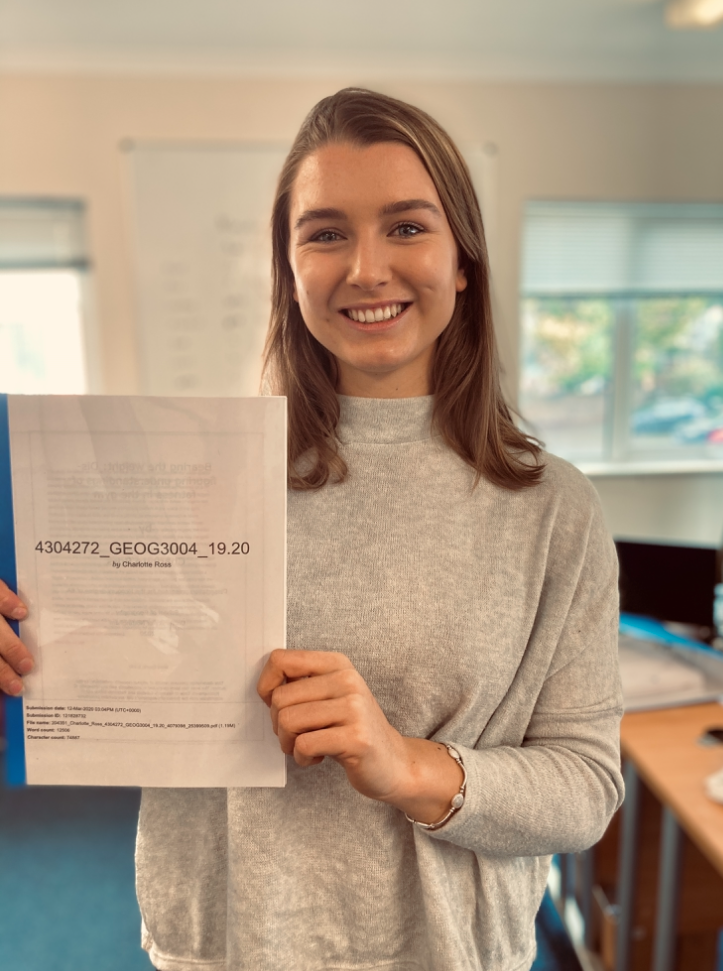
January 20, 2021, by lzzeb
Bearing the weight: Dis-figuring understandings of fatness in the gym
2020 dissertation prize winner, Lottie Ross, reflects on her dissertation:
I was initially intrigued by the feelings a particular space (notably the gym) could induce, just by being a passive being in it. As my research began, I quickly learnt that no physical body is ever passive in space but contributes both directly and indirectly to shaping that space and the experiences of bodies in it. In a similar vein, an experience of a place does not begin at the moment a body becomes physically present in that location, but is deeply rooted in the pre-conceptual thoughts and understandings of that space which are constantly formed, and re-formed, at times prior to actually entering a particular space. Therefore, my study developed to investigate the inner workings of the gym and the socio-spatial processes which manifest, routinise and reinforce particular understandings of health and the way it is practiced. My aims were centred on exploring the lived experiences of those who identified with the larger body or the ‘fat’ identity, and the ways in which the gym marginalised these people by legitimising the fit body over the fat body. In doing so, I demonstrated the ‘figured’ nature of the gym, reflected in the contentious reactions and readings of non-conforming larger bodies. This concept articulates and expresses the place-based exclusionary processes that draw boundaries based on social categories, and the prejudice and exclusion which can be associated with living in a (dis-figured) larger body.
I was keen to take an approach which allowed for a high level of interaction between myself and those who volunteered for my study, in order to capture their experience in both the words they used but also the body language they consciously (and subconsciously) displayed. I undertook fourteen virtual interviews with a range of participants of different body shapes and sizes, paying particular attention to the pauses, silences, absences and emotional expressions used alongside their discernible responses. I also gave participants the opportunity to map their real-time experiences using a gym journal, and while this was not taken up across the whole group, it provided nuanced and valuable insight into immediate ‘in-the-moment’ thoughts and feelings not necessarily possible to gain from interview recall.
My project showed how the gym mobilises the ideology of healthism, fostering the moralisation of health behaviours in the pursuit of the fatless ‘ideal’ body. The concept of visibility became prevalent over the course of the study, where larger bodies were made hyper-visible in the gym, subjecting them to the scrutiny of other members as the body becomes a visible metaphor of healthism. Factors including clothing, perceived ability and the presence of mirrors in the gym contributed to this. Fat bodies were further rendered out of place through alienating fat-bias communication patterns of personal trainers, which presented the larger body as a subject of improvement, reinforcing an inferior-superior power dynamic between the fat body and the fit personal trainer. Examining both the physical and emotional mobility in the gym promotes a retheorisation of how broader social, political and economic contexts can act as a disabling force, and prompts new understandings of power, identity and social relationships between people and place. This research project recognises that dis-figuring understandings of health requires addressing the deeper social, cultural and political structures that underlie fat oppression and exclusion.
I would like to say a huge thank you to Dr Stephanie Coen, my dissertation tutor and the School of Geography at The University of Nottingham for all their help and support, as well as all the lovely people who took part in my study.
No comments yet, fill out a comment to be the first


Leave a Reply